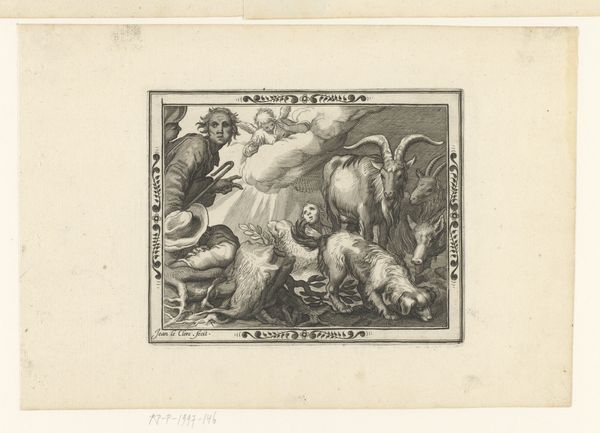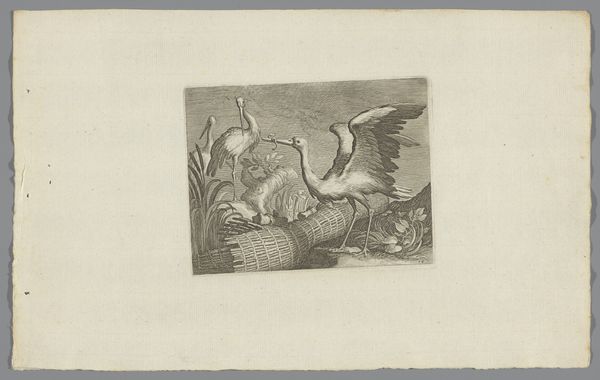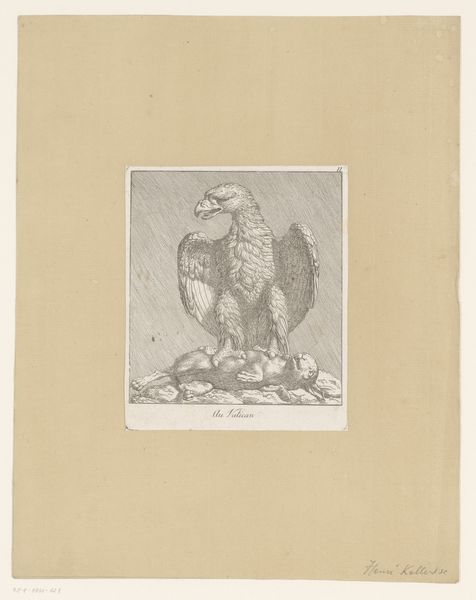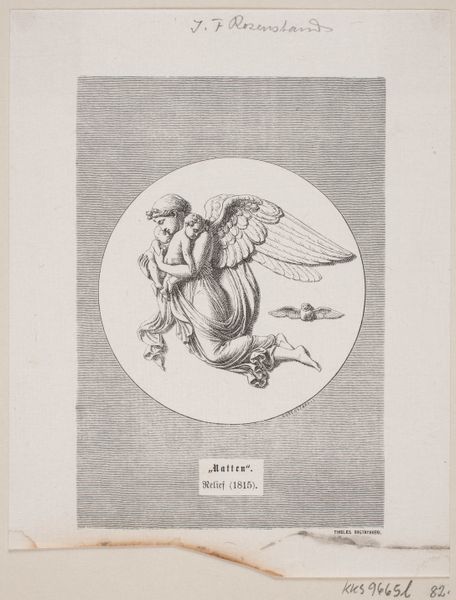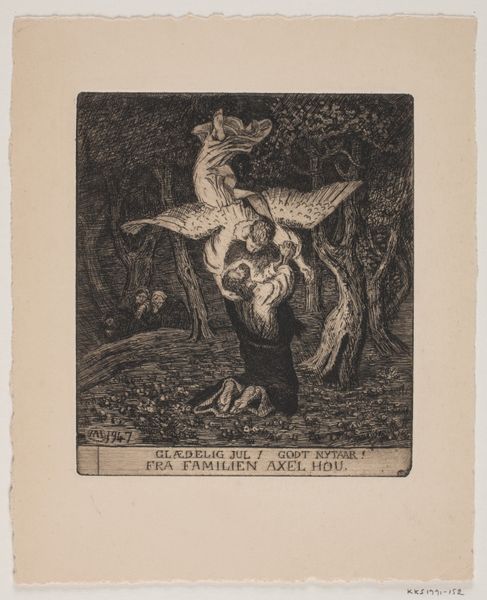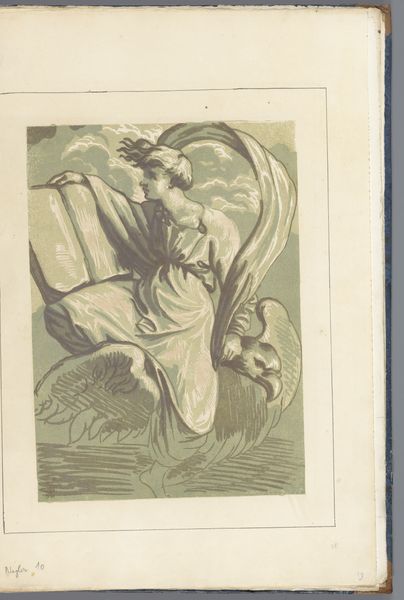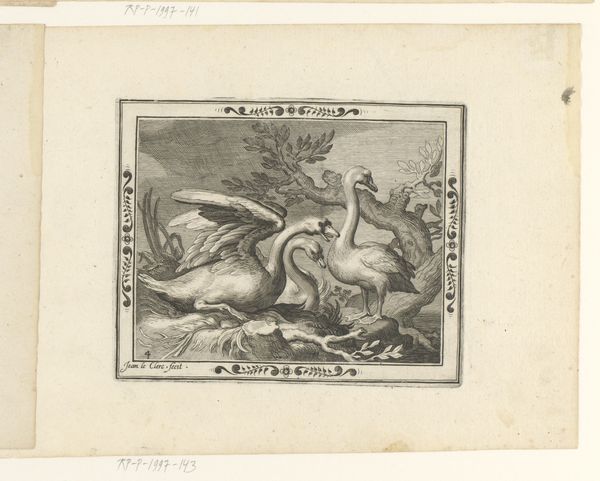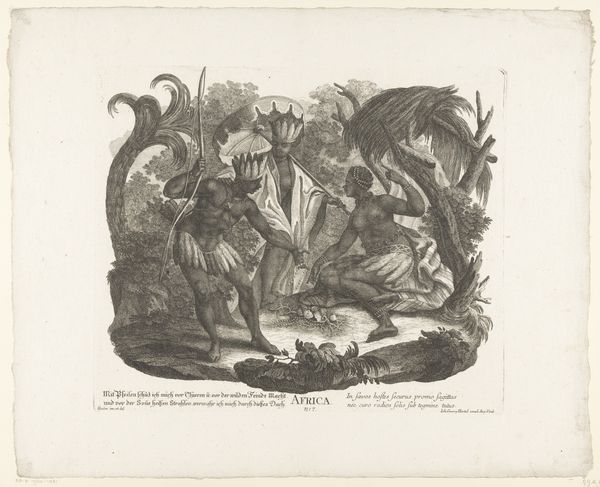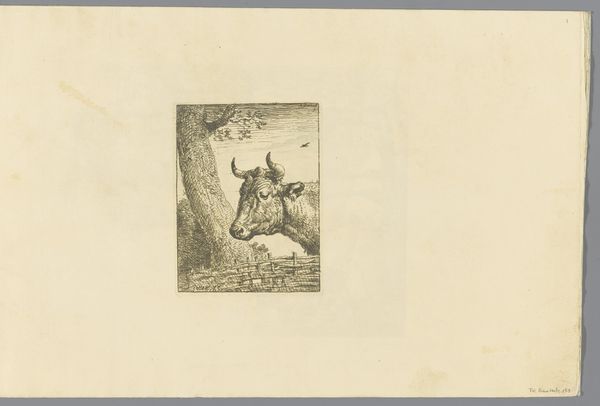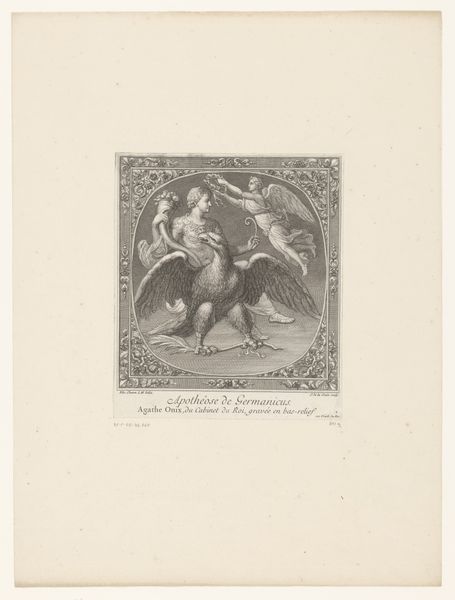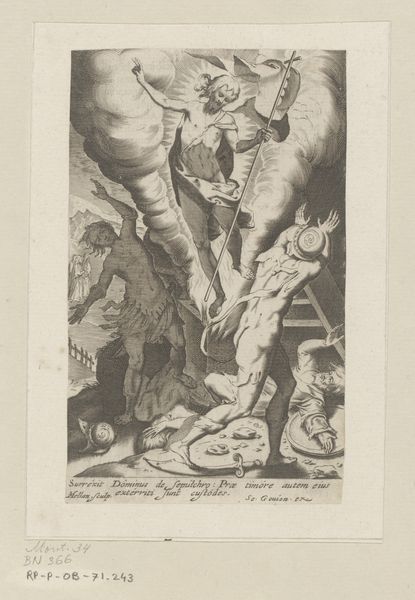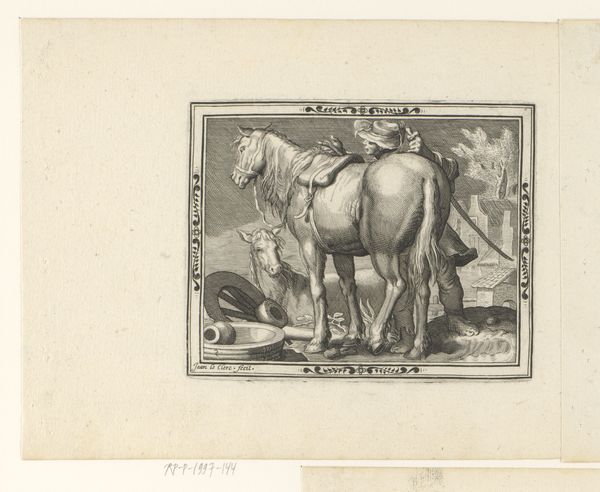
print, engraving
#
animal
#
dutch-golden-age
# print
#
landscape
#
engraving
Dimensions: height 124 mm, width 156 mm
Copyright: Rijks Museum: Open Domain
Editor: This is "Ooievaars" by Jean Leclerc, made sometime between 1597 and 1633. It's an engraving, so a print. I find the composition a little strange – the storks feel cramped within the decorative border. What stands out to you in this piece? Curator: It's interesting you mention the crowding, because for me that speaks volumes. Consider the historical context: the Dutch Golden Age, a period of intense colonial expansion and burgeoning trade. These storks, typically symbols of good fortune, are rendered in a landscape seemingly depleted, almost trapped. Look at them perched amongst discarded baskets, a sense of human encroachment pervades the scene. Editor: So, you're suggesting the image isn’t just a benign depiction of nature? Curator: Precisely! We have to ask: What is this "good fortune" built upon? Could these discarded baskets represent the waste and disruption caused by colonial activities? Consider how Dutch artists were grappling with representing a rapidly changing world, often benefiting from, yet also implicated in, the exploitative practices of the era. Editor: That definitely shifts how I see it. I was just taking it at face value, a pretty image of birds. Curator: The visual language of art is rarely neutral. Examining the historical and social currents that inform an artwork can open up vital discussions about power, privilege, and representation. It pushes us to consider whose stories are being told, and whose are being left out of the frame. How might understanding the context alter your understanding of Dutch Golden Age landscapes moving forward? Editor: I think I’ll definitely be questioning the pretty pictures a lot more! Thanks; that’s given me a lot to think about.
Comments
No comments
Be the first to comment and join the conversation on the ultimate creative platform.
